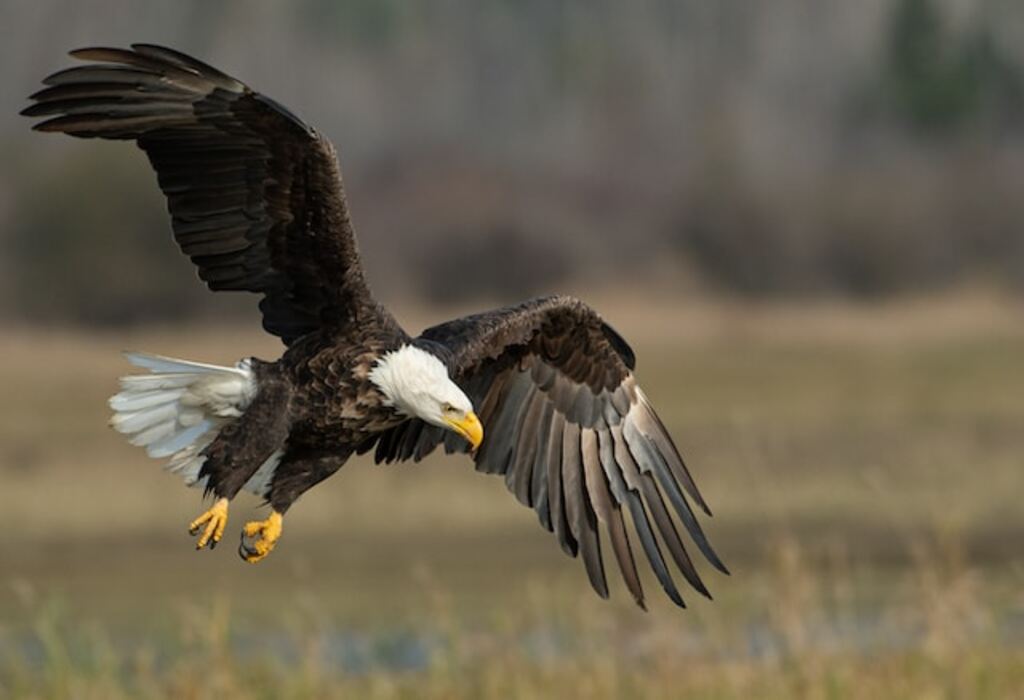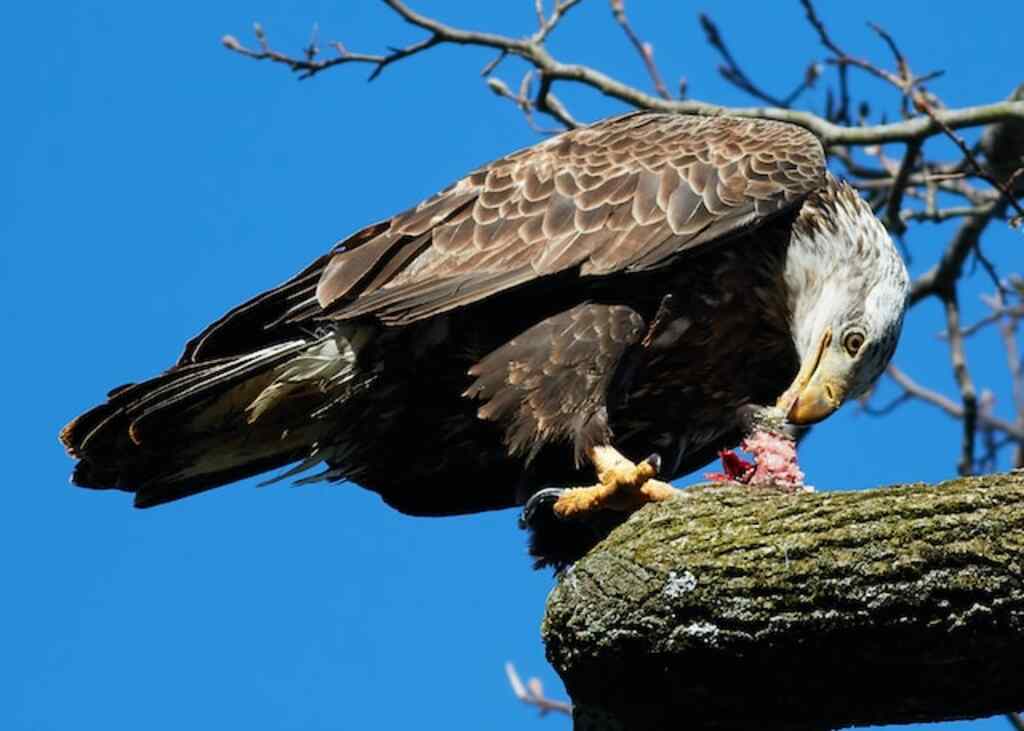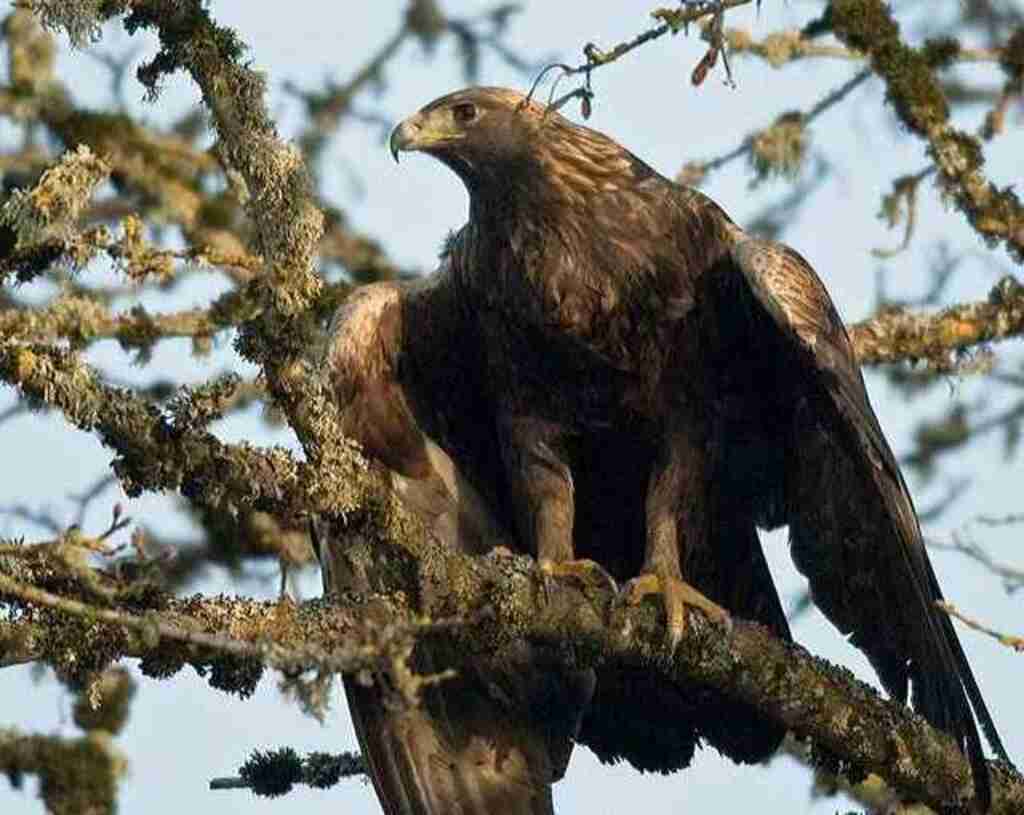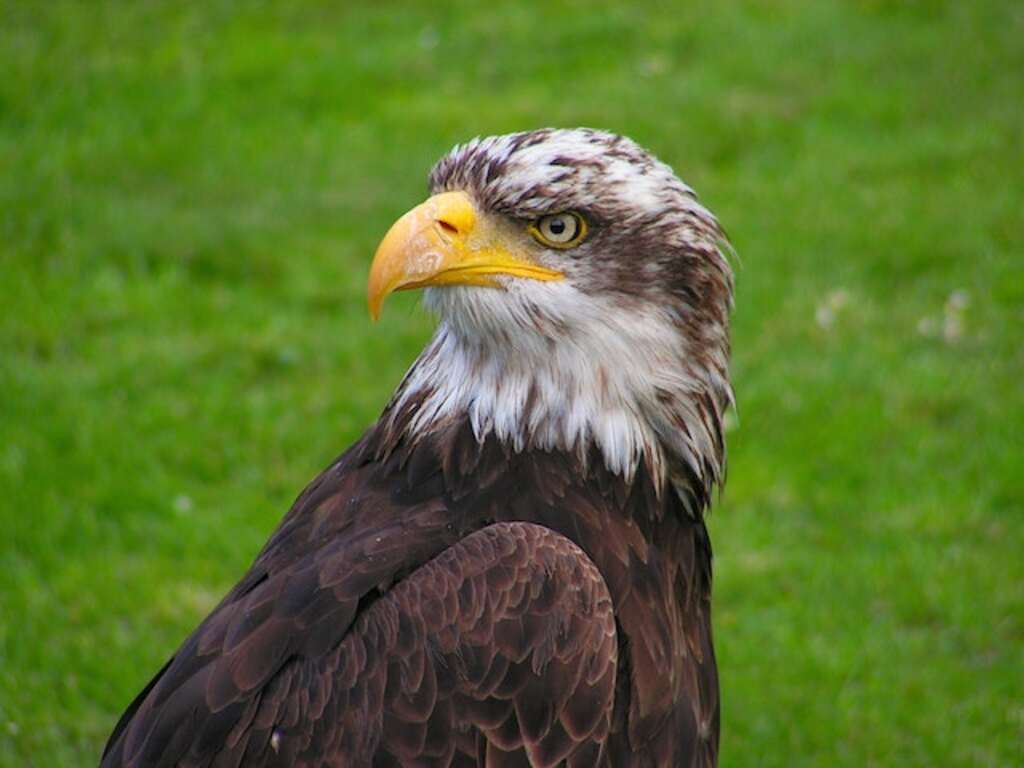Do Eagles Eat Scorpions? In the vast realm of the animal kingdom, eagles reign as majestic predators, soaring through the skies in search of sustenance.
While their diet is diverse, the question of whether eagles feast on scorpions has captivated researchers and enthusiasts alike.
Join us as we unravel the intriguing relationship between these mighty birds of prey and the venomous world of scorpions.
Get ready for a captivating exploration into the untamed appetite of eagles and the hidden secrets of their diet!
Table of Contents
- 1 Key Takeaways
- 2 Do Eagles Eat Scorpions
- 3 The Diet of Eagles
- 4 Eagle Feeding Habits
- 5 Types of Prey Consumed by Eagles
- 6 Scorpions in the Eagle’s Diet
- 7 The Role of Scorpions in the Eagle’s Ecosystem
- 8 Interesting Facts About Eagle Feeding Behavior
- 9 Frequently Asked Questions
- 9.1 How do eagles catch and kill scorpions?
- 9.2 Are scorpions a common prey item for all species of eagles?
- 9.3 Can scorpions defend themselves against eagle attacks?
- 9.4 Do eagles have any adaptations that help them consume scorpions?
- 9.5 Are there any negative effects on the eagle population if scorpions were to disappear from their diet?
- 10 Conclusion
- 11 Author
Key Takeaways
- Eagles have a diverse diet that includes scorpions as a supplementary food source.
- Scorpions contribute to the overall biodiversity of the ecosystem by serving as prey for eagles.
- Consumption of scorpions helps maintain a healthy eagle population by providing a challenge and honing their hunting skills.
- Eagles use their sharp beaks and strong talons to spot, dispatch, and consume scorpions as part of their hunting techniques.

Do Eagles Eat Scorpions
While eagles are known for their diverse diet, they typically do not consume scorpions. Eagles primarily prey on fish, birds, small mammals, and carrion.
Although they have the ability to capture and eat scorpions, it is not a common or preferred food source for them due to the availability of other prey items in their natural habitats.
The Diet of Eagles
The diet of eagles plays a crucial role in shaping their predatory behavior and ecological impact. Eagles are known for their exceptional hunting techniques, which vary depending on the species and habitat.
Some eagles, like the bald eagle, primarily hunt fish and use their sharp talons to snatch them from the water’s surface.
Others, like the golden eagle, have a diverse diet that includes small mammals, birds, and reptiles.
The impact of eagle diet on the ecosystem is significant. By preying on a variety of animals, eagles help maintain a balance in the food chain.
They control the population of their prey species, preventing overpopulation and its subsequent negative effects on the environment.
Understanding eagle feeding habits provides valuable insights into their ecological role and behavior.
Eagle Feeding Habits
In their feeding habits, eagles display a preference for a diverse range of prey, including small mammals, fish, reptiles, and even invertebrates such as scorpions.
Eagle hunting techniques are highly specialized and vary depending on the type of prey being pursued.
For example, eagles may use their sharp talons to snatch fish out of the water or swoop down from the sky to capture small mammals on the ground.
These hunting strategies allow eagles to efficiently catch and consume their prey.
The impact of eagle feeding habits on local ecosystems is significant, as they help regulate populations of their prey species and contribute to the overall balance of the food chain.
Understanding the intricacies of eagle feeding habits is crucial for maintaining the health and stability of these ecosystems.
Moving forward, it is important to explore the types of prey consumed by eagles.
Types of Prey Consumed by Eagles
Eagles demonstrate their versatility as predators by consuming a wide range of prey, including small mammals, fish, reptiles, and invertebrates such as scorpions.
The hunting techniques employed by eagles vary depending on the type of prey they are targeting.
For instance, when hunting small mammals, eagles may use their powerful talons to grab and carry their prey back to a perch.
When hunting fish, eagles may swoop down and snatch them from the water’s surface.
The availability of prey plays a crucial role in determining the population dynamics of eagles. When prey is abundant, eagle populations thrive, but when prey becomes scarce, eagle populations may decline.
Understanding the impact of prey availability on eagle populations is essential for conservation efforts.
Transitioning to the subsequent section about scorpions in the eagle’s diet, it is noteworthy to explore the unique role these arachnids play in the eagle’s hunting repertoire.

Scorpions in the Eagle’s Diet
Scorpions, with their venomous stingers, add a thrilling element to the eagle’s diverse hunting repertoire. While not a primary source of food, scorpions are occasionally consumed by eagles.
These arachnids serve as a supplementary food source, contributing to the eagle’s varied diet.
The eagle’s scorpion hunting techniques are precise and calculated. Using their keen eyesight, eagles spot scorpions from a distance, swooping in with great speed and accuracy to snatch them up.
The eagle’s powerful beak and talons allow them to quickly dispatch their prey.
However, it is important to note that scorpions make up only a small portion of the eagle’s overall diet, as they primarily feed on small mammals and birds.
Transitioning into the subsequent section, the role of scorpions in the eagle’s ecosystem goes beyond their consumption as food.
The Role of Scorpions in the Eagle’s Ecosystem
The presence of scorpions in the eagle’s ecosystem plays a crucial role in maintaining the balance of the food chain.
Scorpions contribute to the overall biodiversity of the ecosystem by serving as prey for eagles.
Their presence ensures that the eagle population has a reliable food source, which in turn helps maintain the population of eagles at a healthy level.
Scorpions are also important in predator-prey dynamics within the ecosystem. They provide a challenge for the eagles, as they possess venomous stingers that can be harmful.
This dynamic creates a symbiotic relationship between the eagle and the scorpion, where the eagle’s hunting skills are honed and the scorpion’s population remains controlled.
The presence of scorpions in the eagle’s diet adds complexity and intrigue to the overall feeding behavior of eagles, which will be explored further in the subsequent section about interesting facts.
Interesting Facts About Eagle Feeding Behavior
Not only are eagles skilled hunters, but their feeding behavior also showcases their adaptability and resourcefulness.
Eagles have developed interesting adaptations and hunting techniques that allow them to efficiently capture their prey.
One such adaptation is their sharp, hooked beak, which enables them to tear apart their food.
Additionally, their strong talons are equipped with sharp, curved claws that help them grasp and hold onto their prey.
Eagles also exhibit impressive hunting techniques, such as aerial hunting and stooping. Aerial hunting involves flying high above their prey and diving with great speed and accuracy to catch it.
The stooping technique involves diving from a high altitude and using gravity to increase their speed and power during the attack.
These fascinating adaptations and hunting techniques demonstrate the eagles’ ability to thrive in various environments and secure their food source effectively.

Frequently Asked Questions
How do eagles catch and kill scorpions?
Eagles employ various hunting techniques to catch and kill scorpions. They use their keen vision to locate the prey and swoop down swiftly, using their powerful talons to grasp and immobilize the scorpions. Eagles have developed a resistance to scorpion venom through evolutionary adaptations.
Are scorpions a common prey item for all species of eagles?
Scorpion predation is not a common prey item for all species of eagles, as their feeding habits vary. However, some eagle species have been observed to include scorpions in their diet, highlighting the diversity of their food sources.
Can scorpions defend themselves against eagle attacks?
Scorpions possess defense mechanisms such as venomous stings and exoskeletons. Eagle hunting techniques include swooping down from above to catch prey. These factors suggest that scorpions can defend themselves against eagle attacks.
Do eagles have any adaptations that help them consume scorpions?
Eagles possess remarkable adaptations for consuming scorpions. With their razor-sharp talons and powerful beaks, they efficiently dismantle scorpions, evading their venomous stings. These adaptations enable eagles to seize their prey with precision and feast upon scorpions without fear.
Are there any negative effects on the eagle population if scorpions were to disappear from their diet?
The disappearance of scorpions from the eagle diet would have a negative impact on the eagle population. Scorpions are important in the eagle diet, providing essential nutrients and contributing to their overall survival and reproductive success.

Conclusion
In conclusion, eagles exhibit a diverse and fascinating diet that includes a wide array of prey. While they are known to consume various animals such as fish, rodents, and birds, it is intriguing to note that they also feed on scorpions.
These venomous creatures play a crucial role in the eagle’s ecosystem by providing a unique challenge and source of nutrition.
The ability of eagles to effortlessly conquer these formidable adversaries showcases their exceptional hunting skills.
Indeed, the feeding behavior of eagles is a captivating subject that highlights the remarkable adaptability and predatory prowess of these majestic birds.



